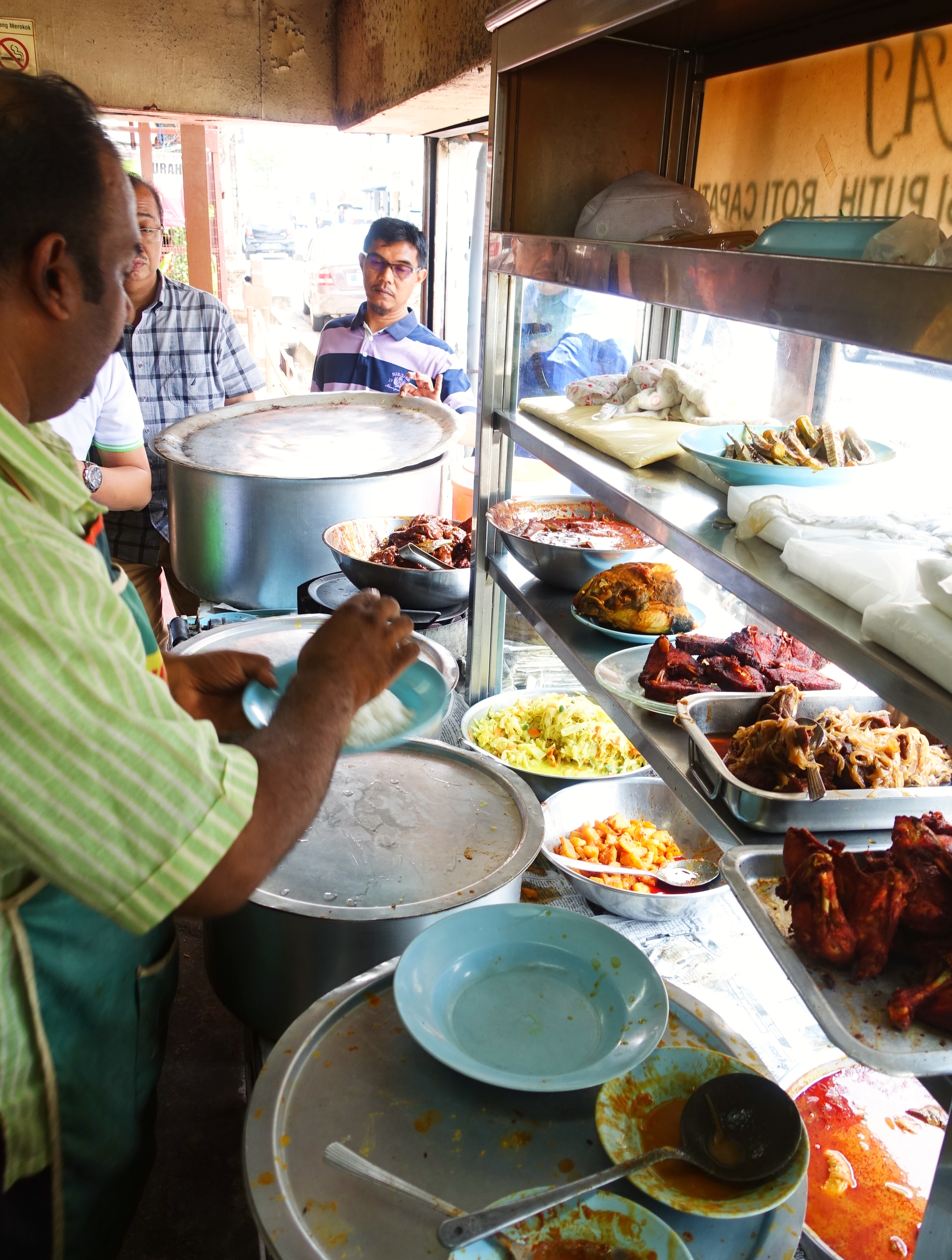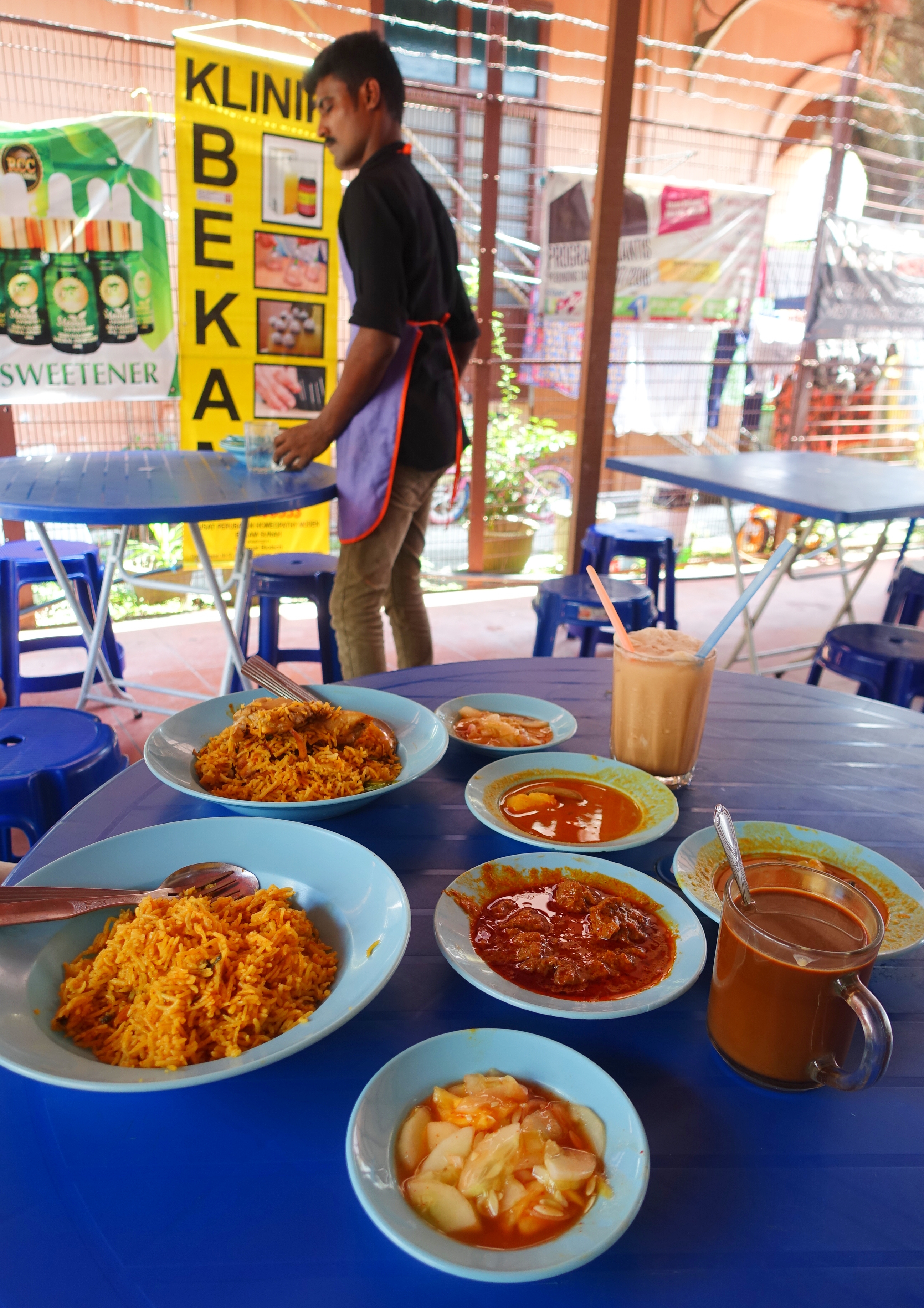MAJ Muslim Food on Ah Quee Street is perhaps the most popular spot for Indian chapatis in George Town.
Like many of Penang’s classic eateries, MAJ has its beginnings at the end of World War II, as Penangites emerged from the smouldering ruins of their once-peaceful city. Founded by Captain Francis Light of the British East India Company in 1786 as a trading post, Penang grew on the back of immigration - large numbers from then-British India, and more from China - at the beck of the British who wanted to develop the once-sleepy island. Throughout its 155-year existence until the Japanese Imperial Army dropped its bombs on George Town, Penangites had led a largely docile, peaceful existence. A blip was during World War I, when German battleship, Emden, sneaked into Penang harbour disguised as British cruiser, HMS Yarmouth, and sunk Imperial Russian warship, Zemchug, killing 88 Russian sailors. The Battle of Penang shocked the colonialists & locals alike, but life then carried on as usual - until the Japanese came 30 years later and occupied George Town, in fact, all of Malaya and Singapore until the end of World War II.
One of the war survivors was Seeni Mohideen, a Tamil-Muslim, who started selling food from a push-cart, peddling breakfast and lunch staples like roti canai and rice with curries to the hungry denizens of George Town’s inner-city, where bustling Little India lived cheek-by-jowl with the city’s Chinatown. In time, old Seeni was able to scrimp together his hard-earned savings to put up a permanent food stand on Ah Quee Street (the street was named after a local Chinese triad warlord) that runs through a then-Malay village out to Buckingham Street, where Penang’s grandest mosque, Masjid Kapitan Kling, was located. Consequently, the ethnic-Malays formed the largest customer base for MAJ, up till today.
In 1977, old Seeni passed his nameless but well-known eatery to his son, Mohamed Ali Jinnah - named after the prominent leader of India’s Muslim League and the founder of modern-day Pakistan. It was certainly an auspicious name, so Mohamed Ali Jinnah used his own acronym, MAJ, as the name for the eatery he inherited from his father.
Through the decades, MAJ built up a loyal following for its chapati flatbreads served at breakfast-time, and rice with a plethora of curries offered at lunch (for some reason, they loathed to use the oft-mentioned term Nasi Kandar here to refer to their rice-and-curry spread). On Fridays (the Muslim sabbath), MAJ offers biryani, beautifully-scented and subtly-spiced rice, served with curried chicken, beef or mutton here.
Today, MAJ is run by Mohamed Ali Jinnah’s genial son, Abdul Ahadhu Mohamed Ali, who still personally mans the service counter, ladling out the food, plating the dishes according to his customers’ orders and collecting the cash payments.
Most of the curries were cooked by Abdul Ahadhu’s mother, Sahabunisa Ahmad, a large, matronly woman with a kindly smile, who sat patiently cutting vegetables and preparing the spice mixes for her helpers in the open kitchen at the back of the service counter.
We were at MAJ at the break of dawn for its chapati flatbreads. These were made to-order: kneaded, rolled and griddle-cooked on the spot, and were light& fluffy.
Don’t miss their teh tarik, sweetened milk tea. I always asked for “kurang manis”, meaning “less sweet”, else you’ll get the “Indian-level” of sweetness which can induce insulin shock.
The chapatis here were served with a thick, oniony lamb curry, almost akin to Pakistani lamb keema.
We also ordered an extra dish of chicken curry, very well-cooked and piquant, with fall-off-the-bone-tender chicken leg. One thing to note, Asians (whether Chinese or Indian or Malay) prefer dark meat (chicken thigh or drumstick) over white (breast-meat) - the opposite of Westerners. So, in fact, if you come a bit late, you’d find only curried chicken breasts left.
MAJ gets busier towards lunch-time - it was Friday yesterday, so we went back there just before noon for its Fridays-only biryani. We ordered two types - the chicken biryani and the beef biryani. MAJ offers Tamil-style biryani, where the spice-scented rice is cooked separately from the meats, but served together (unlike the Hyderabadi-style biryani where half-cooked rice grains are layered with raw, marinated meats, and then steamed together till fully-cooked, thus infusing the rice with the flavours and scent from the meats).
But MAJ’s rendition of the biryani was very good - the rice grains were loose but fluffy, scented with cardamom, cinnamon bark, star anise and cloves, tinted orange with tomatoes and turmeric. Each order comes with a small saucer of potato-and-aubergine curry with a meaty flavour, and a cucumber raita. I’d strongly recommend the curried beef, which has a more assertive flavour that paired well with the biryani.
There’s a perpetually long queue at the service counter, as many also do take-outs - a testimony to this place’s 70+ year-old pedigree.
Address
MAJ Muslim Food
47, Ah Quee Street (Lorong Ah Quee)
10300 George Town, Penang
Opening hours: 8.30am - 6pm, Mon-Sat. Closed on Sundays.



























